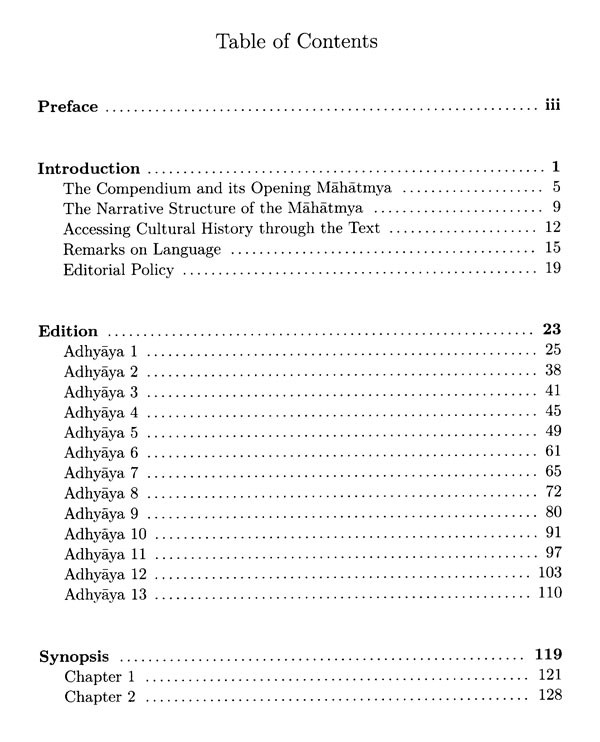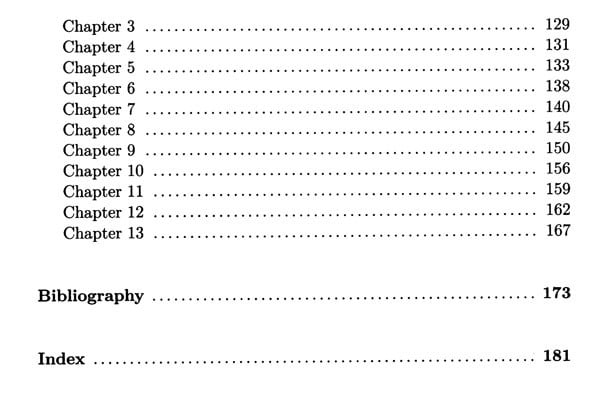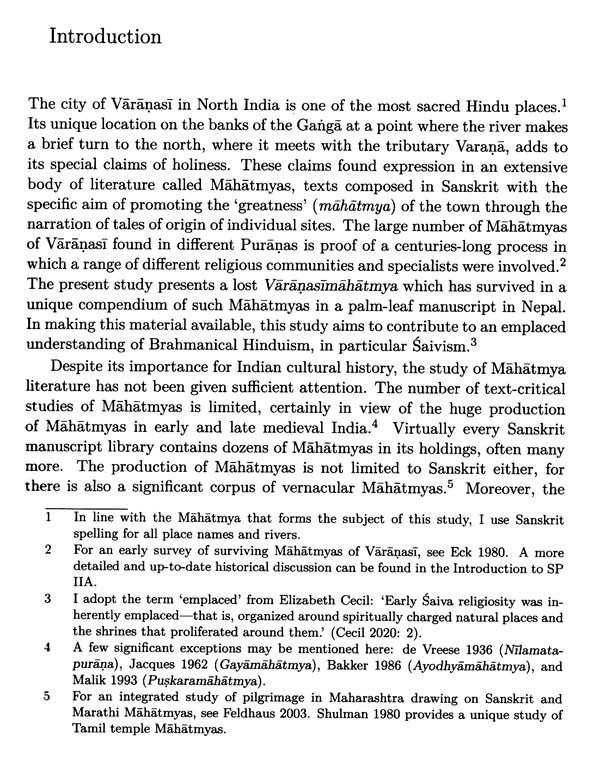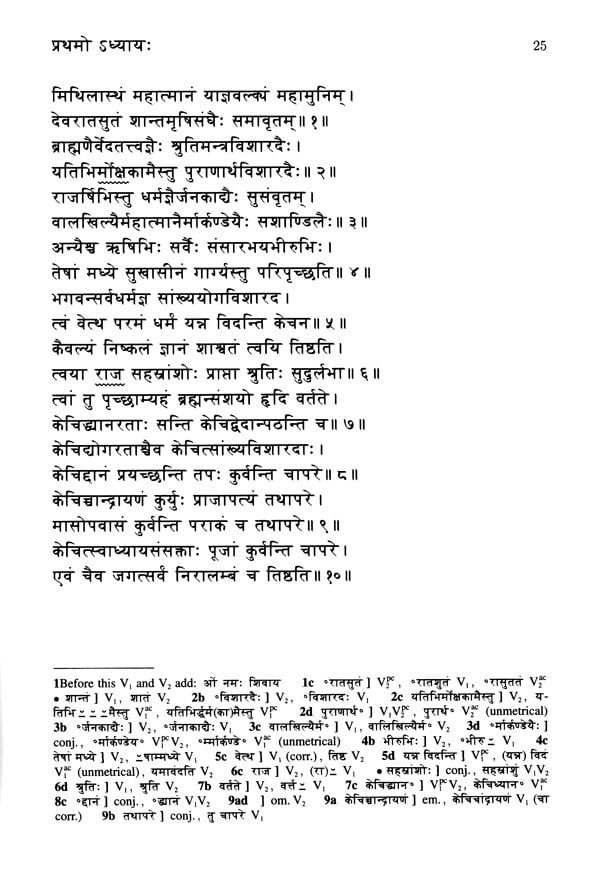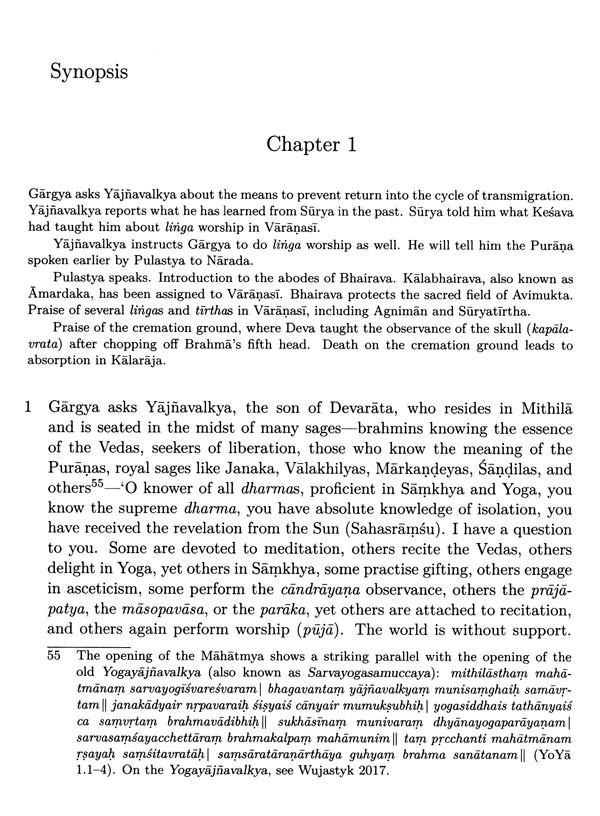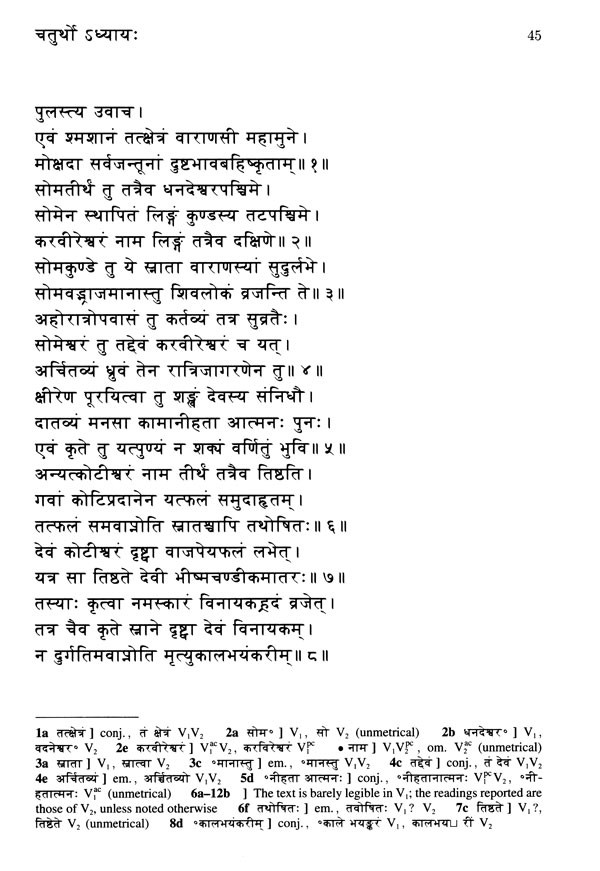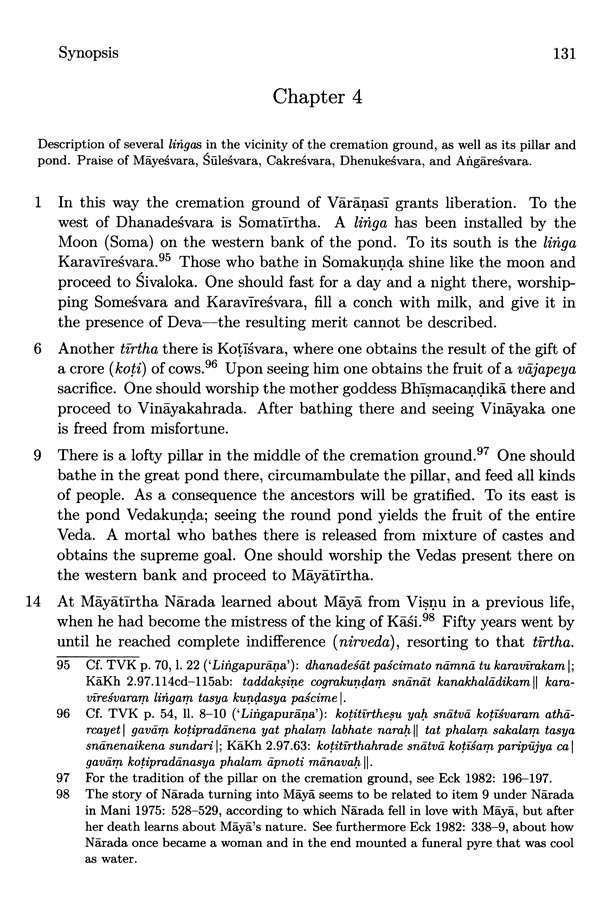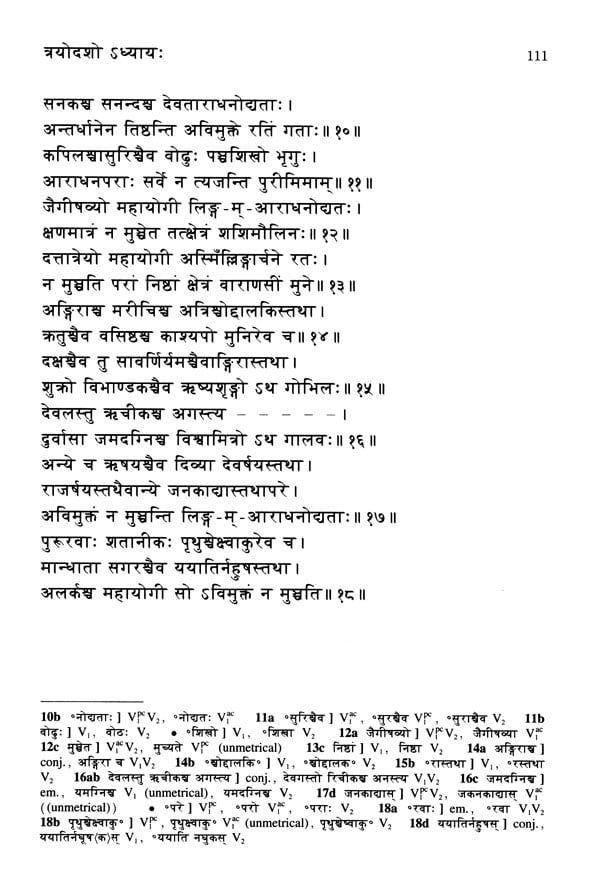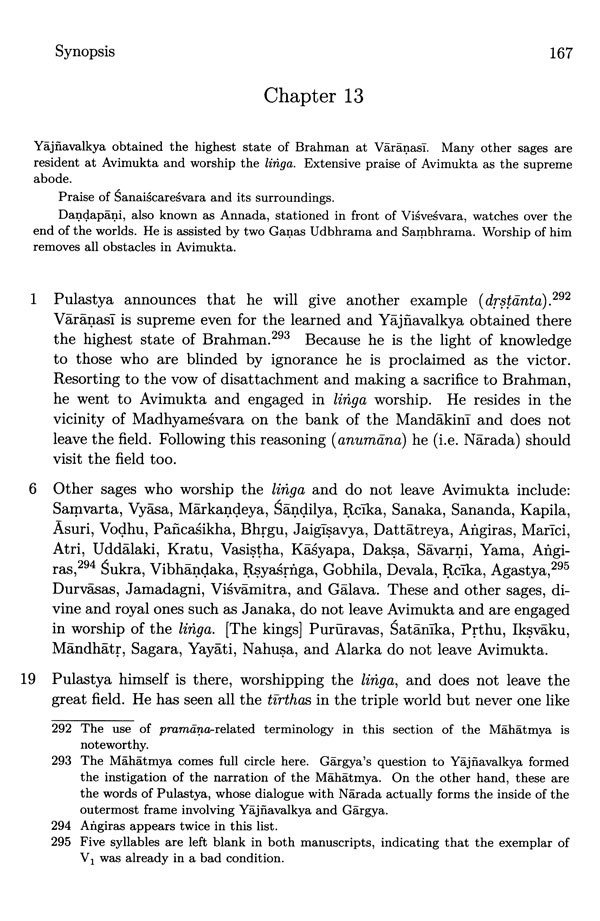
The Varanasi Mahatmya of The Bhairavapradurbhava (A Twelfth- Century Glorification of Varanasi)
Book Specification
| Item Code: | AZD121 |
| Author: | Peter C. Bisschop |
| Publisher: | Institut Francais De Pondichery |
| Language: | Sanskrit Text With English Translation |
| Edition: | 2021 |
| ISBN: | 9788184702408 |
| Pages: | 208 |
| Cover: | PAPERBACK |
| Other Details | 9.5 x 6.80 inches |
| Weight | 394 gm |
Book Description
The city of Vārāṇasī in North India is one of the most sacred Hindu places. Its unique location on the banks of the Gangā adds to its special claims of holiness. These claims found expression in an extensive body of literature called Māhātmyas, texts composed in Sanskrit with the specific aim of promoting the “greatness” (māhātmya) of the town through the narration of tales of origin of individual sites. The present study presents a littleknown Vārāṇasīmāhātmya which has survived in a unique compendium of such Māhātmyas in a palm-leaf manuscript in Nepal. In making this material available, this study aims to contribute to an understanding of the emplacement of Brahmanical Hinduism, in particular Saivism.About the Book
Peter Bisschop is Professor of Sanskrit and Ancient Cultures of South Asia at Leiden University. His main publications bear on the history of Saivism and include Early Saivism and the Skandapurāņa (2006), volumes IIB (with Hans Bakker & Yuko Yokochi, 2014) and IV and V (with Yuko Yokochi, 2018 and 2021) of the critical edition of the Skandapurāņa, Universal Saivism (2018), and the edited volume Primary Sources and Asian Pasts (with Elizabeth Cecil, 2021).
This work has its origins almost fifteen years ago, when Harunaga Isaacson drew my attention to a manuscript held in the Kaiser Library in Kathmandu, microfilmed by the Nepal German Manuscript Preservation Project (NGMPP C 6/3). The manuscript turned out to consist of a unique collection of Māhātmyas about Vārāṇasī, including, importantly, large portions of the Vārāṇasīmāhātmya of the original Skandapurāņa. I published a brief report of my initial findings in the October-November 2007 issue of the Newsletter of the NGMPP ('Notes on a Vārāṇasīmāhātmya Compendium'), in which I expressed my intention to make parts of it available in future studies. In the years that followed I have referred to sections of the manuscript's long opening Māhātmya in several publications, but it is only now that I am able to present a complete edition of this opening Māhātmya, which I singled out for publication because it is an extensive Māhātmya not known from any other source.
My work progressed considerably with the acquisition in 2011 of high resolution colour photographs of the manuscript, as well as microfilm images of a transcript of the same (NGMPP E 766/7), again thanks to the help of Harunaga Isaacson. This allowed me to publish portions of the text in 2013 ('The Abode of the Pañcamudrās'), 2016 (‘A 12th-Century Vārāṇasīmāhātmya and Its Account of a Hypethral Yoginī-Temple”), and 2020 (“From Mantramārga Back to Atimārga”). I also used it as a case study in my inaugural lecture at Leiden University in 2011 (‘Voer voor Filologen”). Work on the edition, however, proved challenging and slow because of the bad state of transmission of the text and its overall poor composition. I returned to the edition on and off, with protracted breaks, continuing to revise it, without being able to reach a firm and satisfying solution to the many problems the text presented.
That I have been able, nevertheless, to improve significantly upon the various drafts of my edition of the text over the years is all thanks to the help of students and colleagues with whom I have read portions or who have commented upon it. A first and in many ways foundational reading session took place in Kőszeg (Hungary) in July 2008, as part of the Fifth International Intensive Sanskrit Summer Retreat organised by Csaba Dezső and Imre Bangha. I also received important feedback at a presentation at the Second International Workshop on Early Tantra held at the École française d'Extrême-Orient in Pondicherry in the summer of 2009. I furthermore exposed students to portions of my draft edition at the Ninth Leiden Summer School in Languages and Linguistics in July 2014, and most recently in my Advanced Readings in Sanskrit Literature seminar at Leiden University in the autumn of 2020.
Given this state of affairs, it is impossible to list all the people who have provided suggestions for emendation or interpretation of the text along the way, either by proposing concrete corrections or simply critically questioning me. I should at least mention Diwakar Acharya, Hans Bakker, Dániel Balogh, Elizabeth Cecil, Csaba Dezső, Dominic Goodall, Arlo Griffiths, Shaman Hatley, Harunaga Isaacson, Nirajan Kafle, Sanne Mersch, Alexis Sanderson, PéterDániel Szántó, and Yuko Yokochi. Two persons in particular deserve to be singled out. First of all, Sanne Mersch, who is the only person to have read through the entire text with me. She also contributed to the codicology of the manuscript in preparation for her MA thesis (Leiden University, 2013). Secondly, and most importantly, I owe a great debt to Yuko Yokochi, who independently read through the text of the edition and provided me with numerous corrections and suggestions for improvement. Her critical feedback has contributed tremendously to the edition.
**Contents and Sample Pages**
